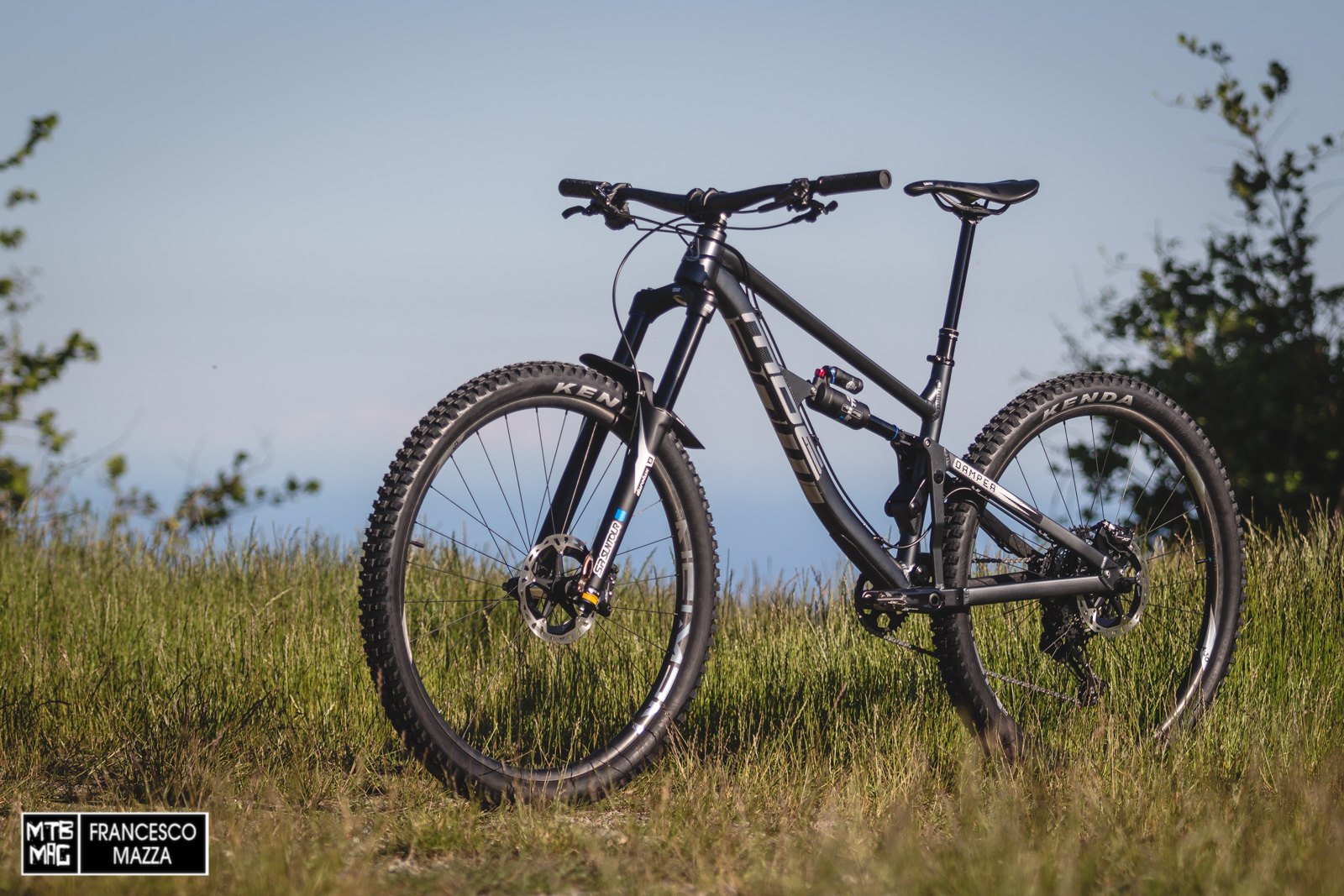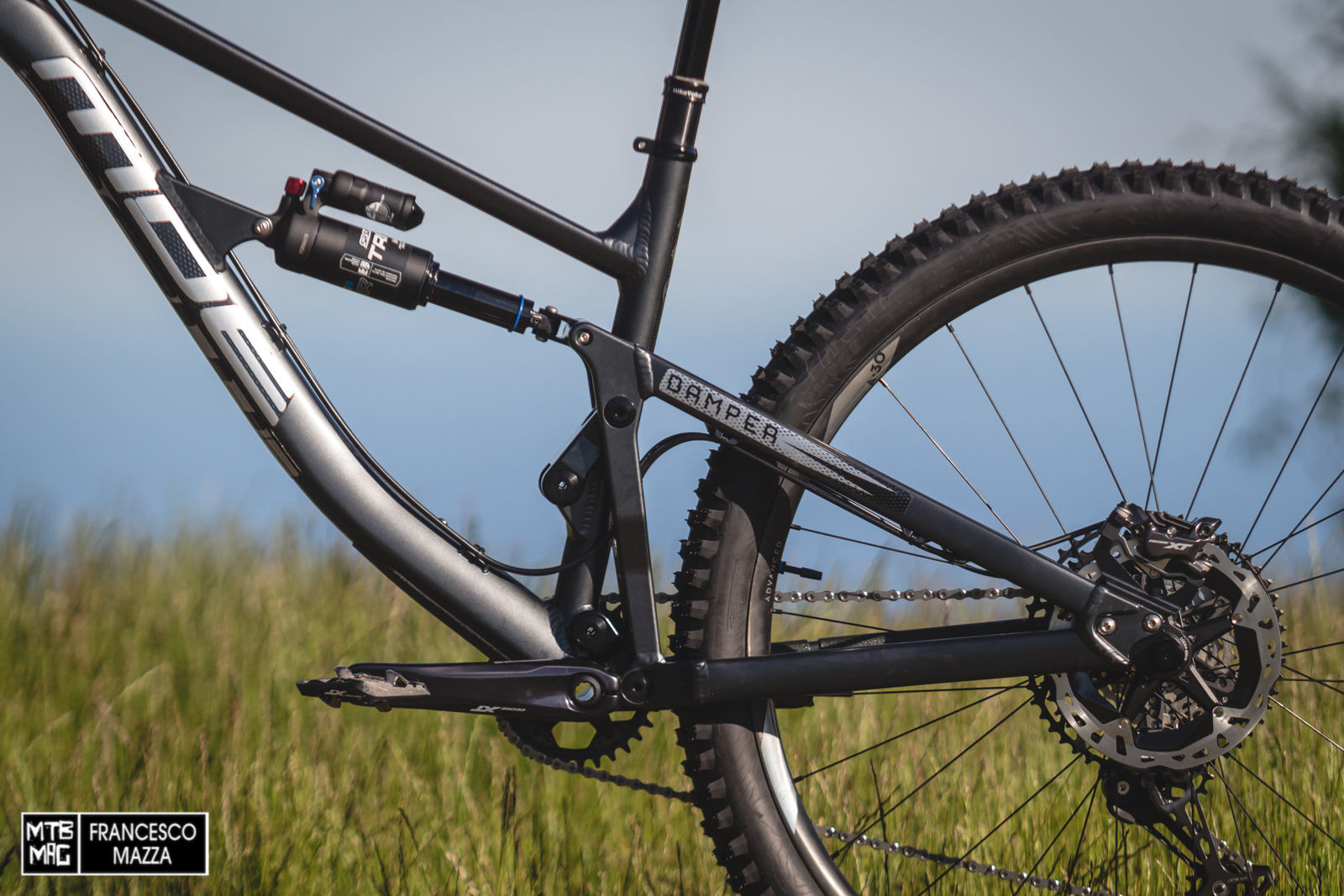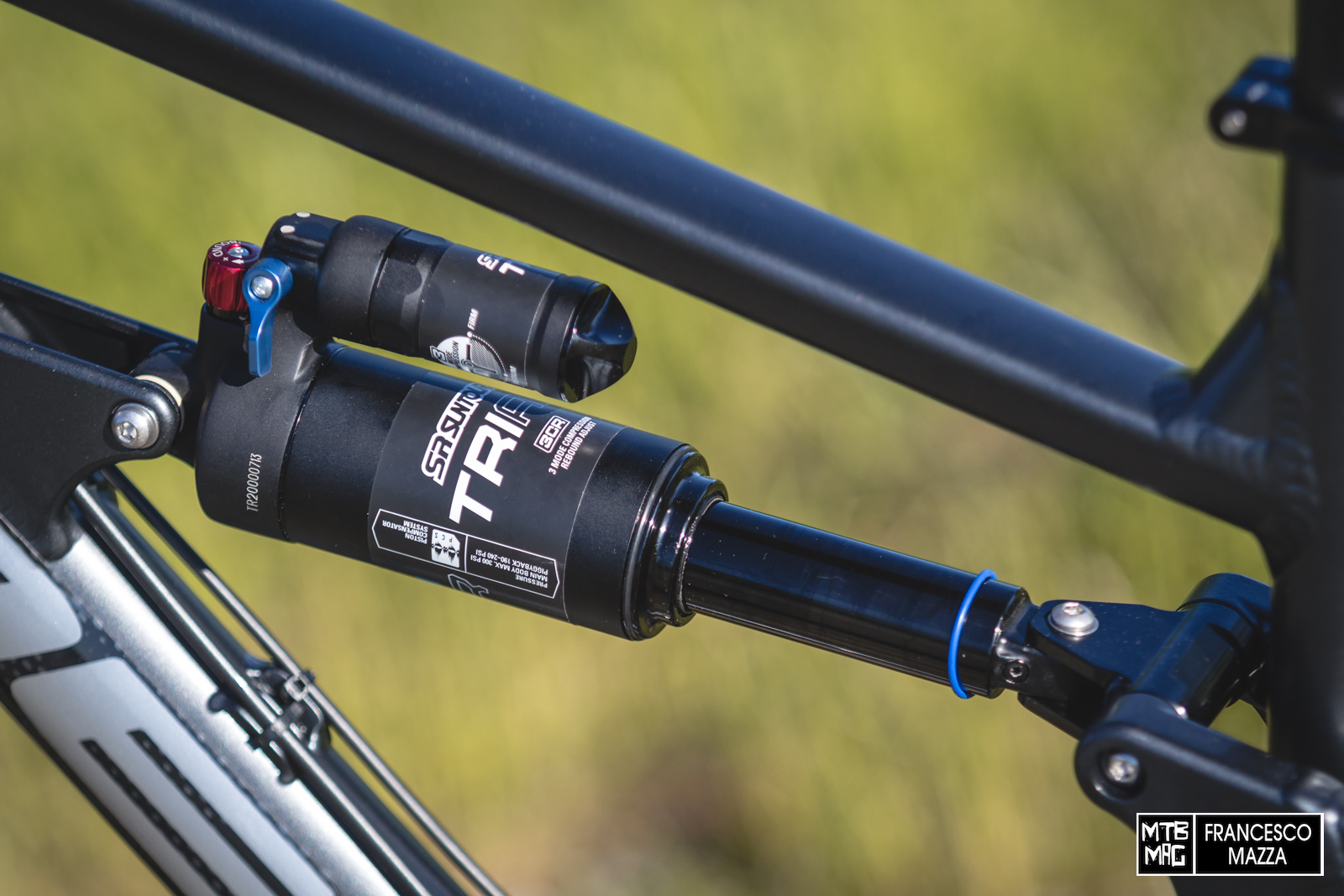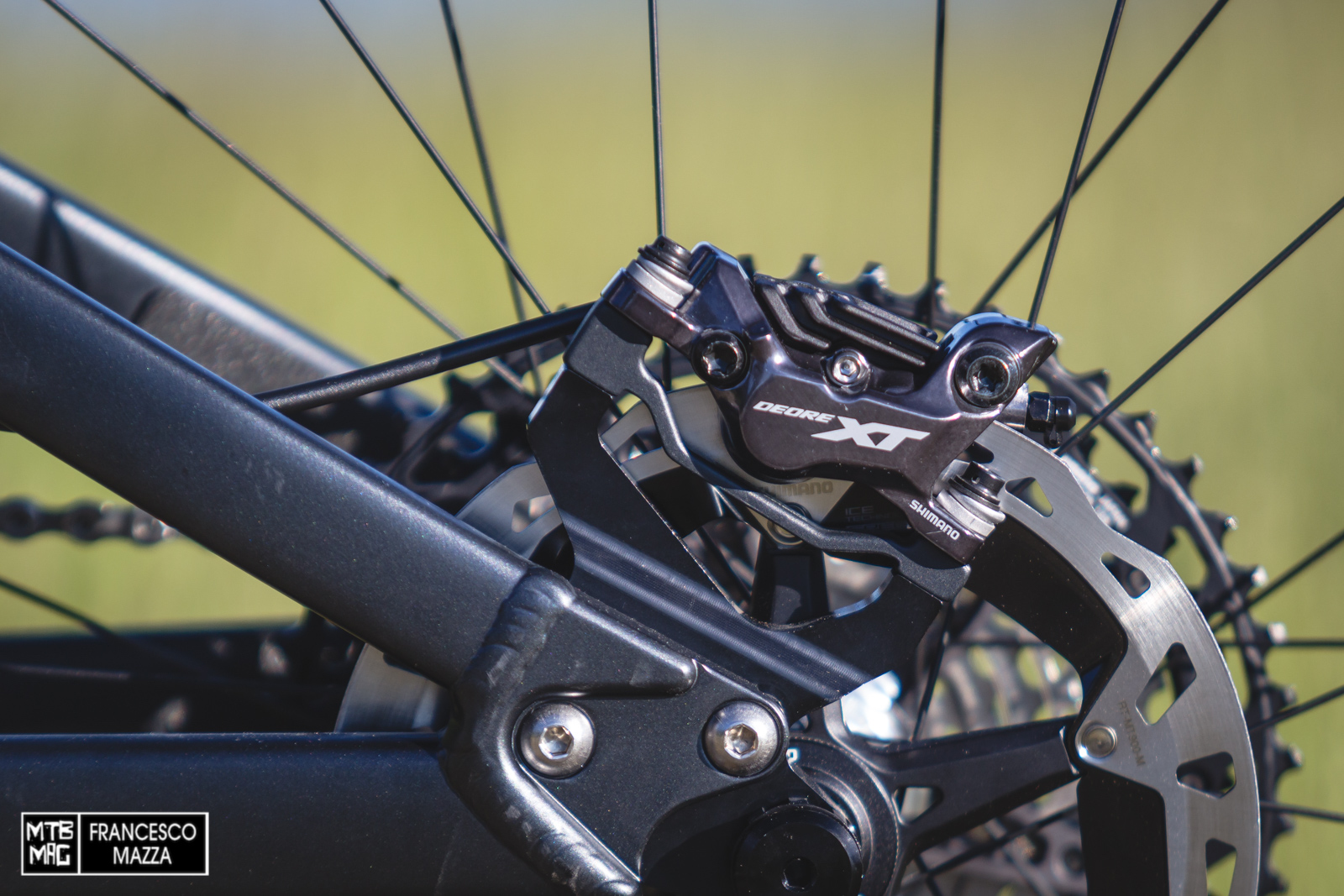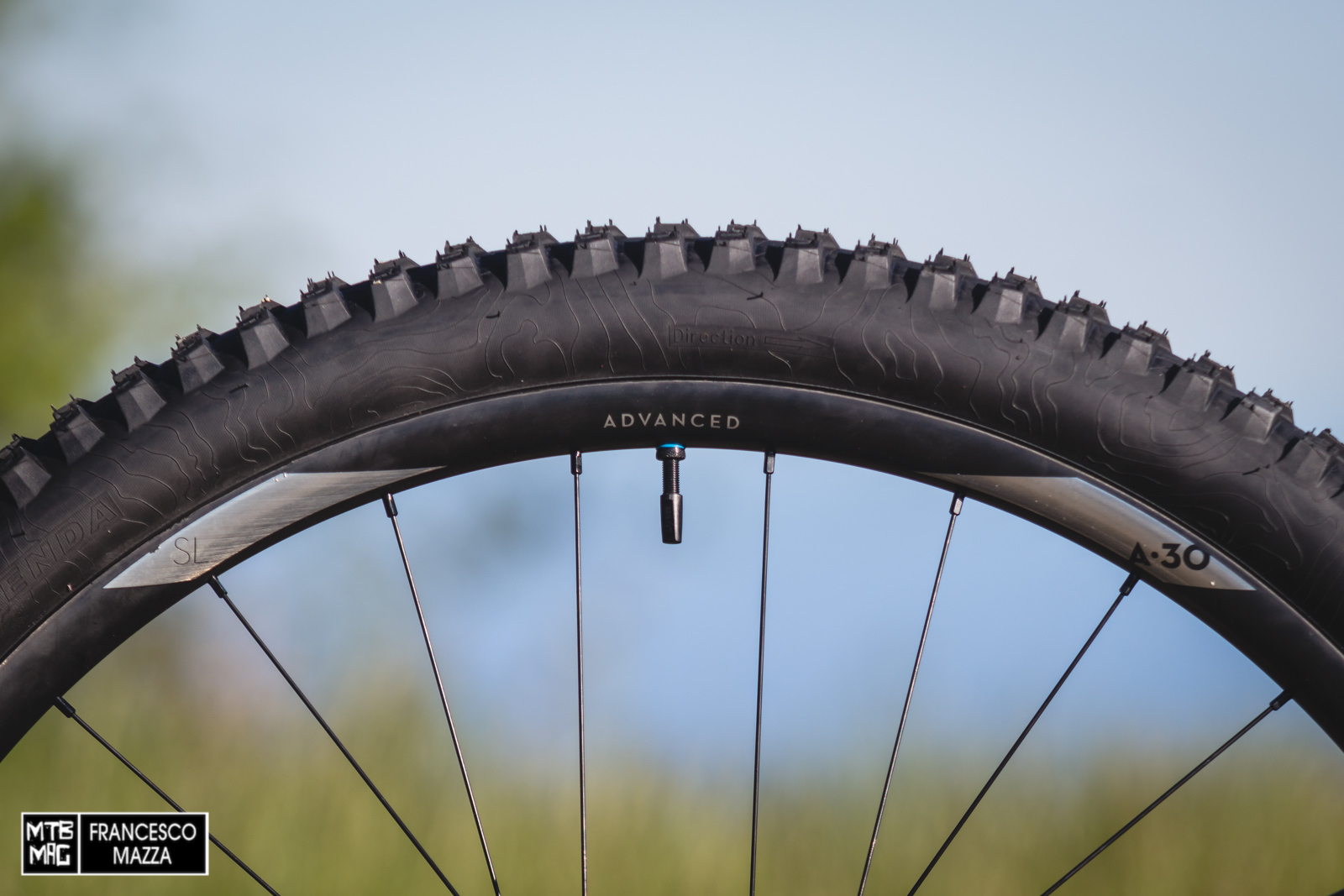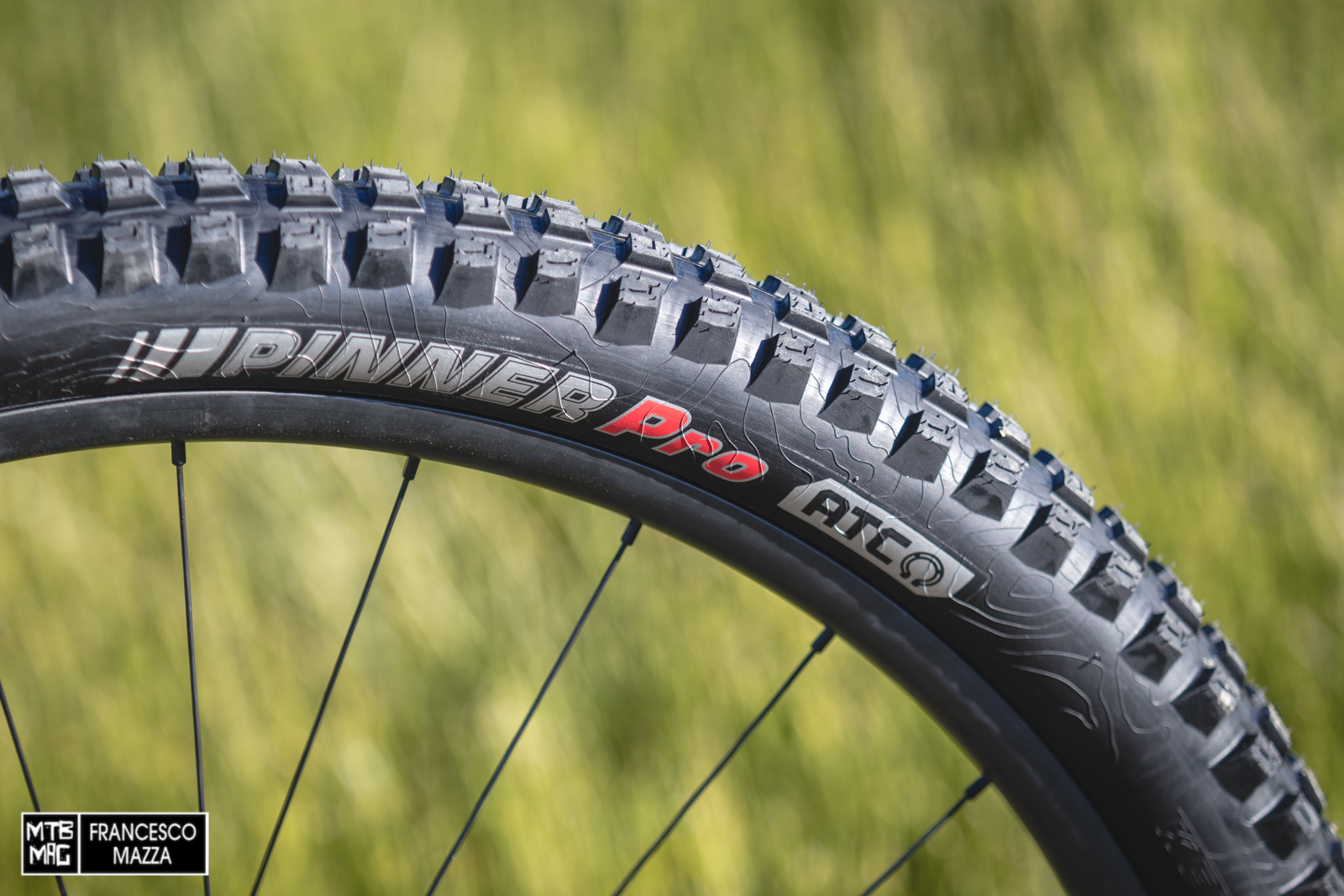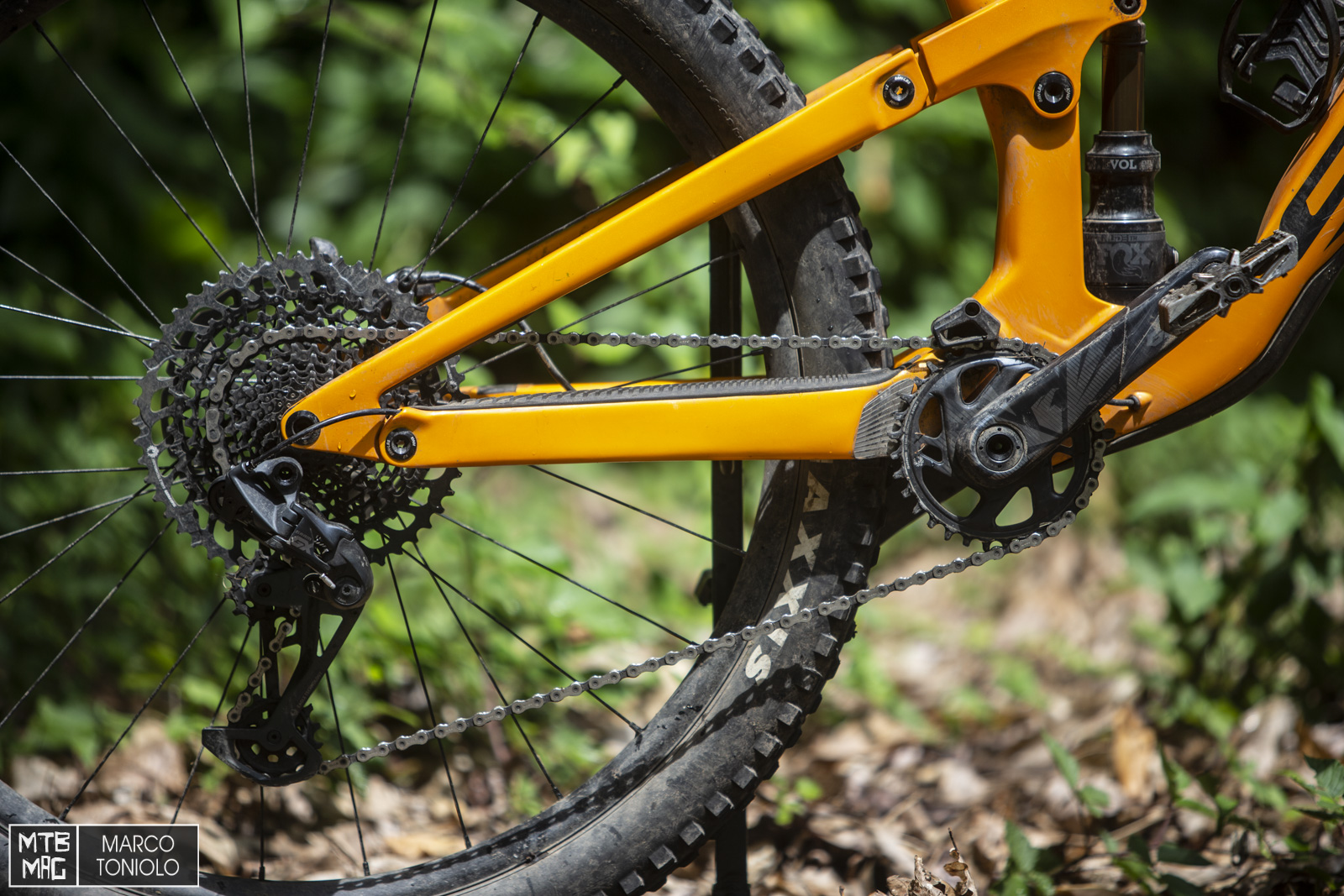With a several months long dely, my new bike for long term testing of components finally came out of the workshop to see the light of day, and especially the trails. The MDE Damper 2020 frame was ready from the end of January waiting for all the components to be assembled, some of which arrived in the following weeks while those which should have arrived in late March, due to the closure of many companies during the lockdown, were only just delivered last week. After such a long wait, I wasted no time and immediately finished the assembly, took photos for this presentation article and took the bike down its first trail.
The frame of the new MDE Damper 2020 is an evolution of the previous model with a long series of innovations that include the suspension system, the geometry, the design and several details that we will dive deeper into with the publication of the test. Once again I chose the 29-inch version and requested some geometry changes thanks to the Rider Tuned Geometry personalization program offered by MDE. I made very few changes in reality, compared to the standard geometry, given that, for the size medium of the current model, MDE was inspired by the geometry that I had requested for the previous model with Rider Tuned Geometry. In summary, I ventured a very aggressive 64° steering angle, resulting in a much longer wheelbase and front-center and I reduced the height of the head tube to lower the stack by about 9mm.
The new version of the suspension system from the Turin based brand, i-Link 2.0, relies on a completely new rear end and an updated linkage that’s equipped with bearings specially made by Enduro Bearings. Features such as the compression curve and the anti-squat have been modified to further improve performance precisely based on the strong points of this suspension kinematics layout, that are the well-calibrated progressivity throughout the travel and the excellent pedaling performance. The shock absorber is positioned higher so as to leave room for a bottle cage and for the same purpose the cable routing follows a path that better adheres to the frame.
The fork is the new model of the SR Suntour Durolux with the Equalizer air cartridge, of which I have already published all the technical details and the first riding impressions on the Italian pages. The version for this test is the top of the range R2C2 with 170mm of travel. On the new Damper I will complete the test of this fork, already started on the previous Damper. It will soon be replaced by an absolute novelty that we will soon be able to show you as an exclusive preview.
In conjunction with the Durolux fork I mounted the Suntour shock absorber, the TRIAir 3CR, a real surprise in terms of performance and adjustability thanks to the possibility of inserting volume reducers in both the positive and negative air chambers, as well as being able to adjust the pressure of the IFP compensation chamber in the reservoir.
The drivetrain is from Shimano, a complete 12-speed Deore XT M8100 groupset with a single 32-tooth chainring and 10-51 cassette. Waiting to be able to mount it on the bike, last month we published an article dedicated to this group in which I dove into every single technical detail of each component. The assembly of each piece was simple and the adjustments very fast and precise.
Being the complete group, the brakes are therefore four-piston Shimano XT M8100, with 180mm diameter RT-MT900 Ice Tech Freeza Centerlock discs. In the preview article of the XT group I presented the 6-hole discs SM-RT86 but there was a change of program regarding the wheels and since they were available with CL mount, I gladly opted for this type of attachment.
The wheels are one of the models of the brand new Newmen range presented last month with new hubs and carbon rims. The choice obviously went to the enduro model, the Advanced SL A.30 with a 30mm internal width channel and the very low verified weight of 1,597 grams for the pair. Milkit sealant and their ingenious valves are supplied as standard with the wheels.
The wheels are completed by the Kenda Pinner tires, a novelty presented last month as the most aggressive tire in their range and developed in collaboration with numerous top athletes including Aaron Gwin. I chose the 2.4″ version with ATC casing, lighter than the highly armored AGC casing for DH, with a verified average weight of 990 grams for each tire. I didn’t know what to expect from these tires but during the first ride they literally impressed me for the total control over slimy rocks.
Recently BikeYoke has created a specific adapter to interface the Triggy remote control of the Revive telescopic seatpost to the new (and hopefully definitive) Shimano I-Spec EV attachment. This way I was able to attach the Triggy, which uses a SRAM Matchmaker attachment, directly to the Shimano brake collar, as I did on the right side for the XT trigger, obtaining a very neat cockpit. The adapter is also available for the right side and allows you to connect a SRAM trigger to Shimano brakes with I-Spec EV mount.
The other components such as the e*thirteen cockpit, the Fabric Scoop saddle and the Fabric Silicone grips, were inherited from my previous Damper. The weight of the bike so assembled, without pedals and complete with sealant in the tires, is 14.04 kg.
MDE Bikes
SR Suntour
Shimano
Newmen
Kenda
BikeYoke

